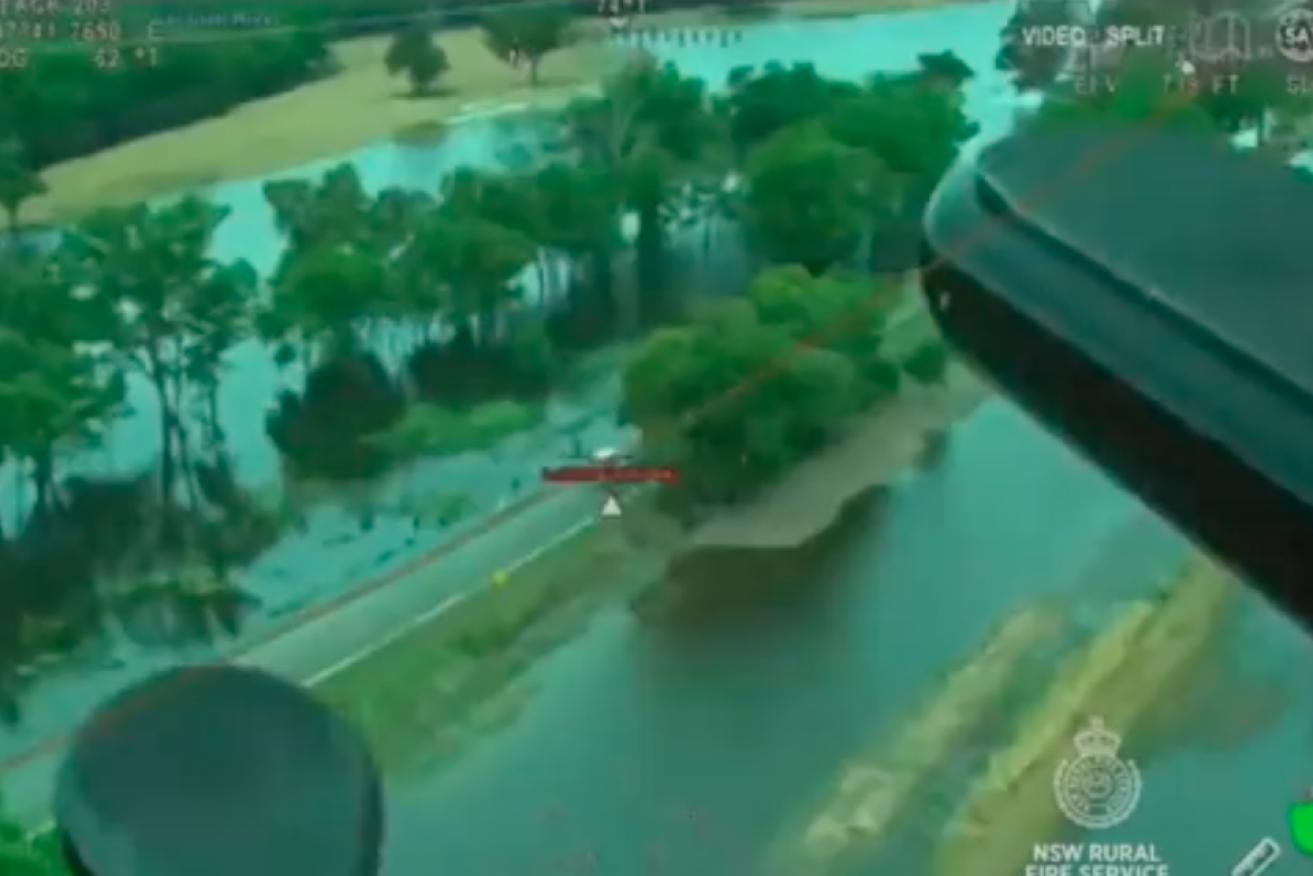Wet, windy and dangerous – La Nina settles in for Australian summer


The Lachlan River in central-west NSW,broke its banks as the rain kept falling. Photo: Twitter
Australian meteorologists have declared a La Nina weather event is underway, with the country’s wettest spring in 10 years to continue into summer.
La Nina is part of a cycle known as the El Nino-Southern Oscillation, involving a natural shift in ocean temperatures and weather patterns in the Pacific Ocean, bringing wetter conditions and more cyclones.
Bureau of Meteorology head of operational climate services Andrew Watkins said tropical weather, including significant rainfall, would lash eastern, northern and central parts of Australia over the next three months.
He said La Nina will bring more rain to river catchments that are already at their capacity.
“We have seen a relatively wet spring, it could be our coolest spring since 1999 and it is looking like the wettest spring since 2011,” Dr Watkins said in Melbourne on Tuesday.
“Because of the conditions we’ve seen over the last couple of months, making the landscape very wet, we are at risk of more widespread flooding than usual.”
Tweet from @BOM_au
The areas most likely to be hit by heavy rainfall from now until January include Queensland, NSW, Victoria and Tasmania.
The bureau has already said that more wet weather is on the way after rain and storms drenched NSW in the past week, leaving catchments full and elevated flood risks.
“Another trough is expected to cross the state during Wednesday and Thursday, bringing a return of rain and unsettled conditions,” the BoM said on Tuesday.
Renewed flooding is possible in NSW’s inland rivers this week, where minor to major flood warnings remain.
The Lachlan River at Condobolin Bridge in the central-west is expected to exceed the minor flood level of 5.20 metres on Tuesday morning, with moderate flooding later this week ahead of the river potentially peaking at 5.9 metres on Friday.
The Hunter River at Muswellbrook peaked late on Monday afternoon, with moderate flooding. The Hunter river at Denman peaked around the moderate flood level early on Tuesday.
There is also minor flooding along the Upper Hunter at Denman.
Tweet from @NSWRFS
La Nina also brings a 65 per cent higher chance that parts of the country will have more tropical cyclones than average.
While cooler temperatures will be felt in parts of eastern and southern Australia, there could also be heatwaves. Dr Watkins said that meant “the heatwaves we get over summer tend to be longer, although not as extreme, and more humid”.
The last significant La Nina event hit Australia in 2010 to 2012, leading to the nation’s wettest two years on record. There was also widespread flooding.
However, Dr Watkins said this year’s event was not predicted to be as strong.
“Last year we saw a weak to moderate La Nina event, now we’re backing that up with a weaker La Nina event,” he said.
“A weak La Nina can still bring heavy rainfall at times. With a wet landscape we are at risk of more wide-spread flooding over the summer.”
The bureau had initially announced a La Nina alert in October, saying it was expected to be confirmed by November.
-with AAP








